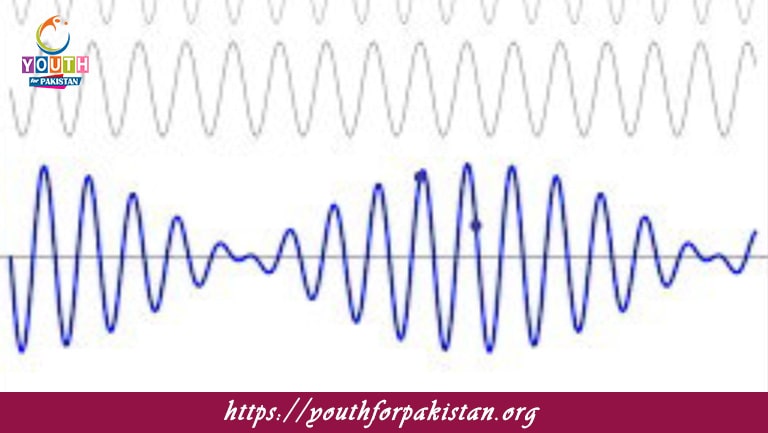Superposition Of Sound Waves MDCAT MCQs with Answers

Welcome to the Superposition Of Sound Waves MDCAT MCQs with Answers. In this post, we have shared Superposition Of Sound Waves Multiple Choice Questions and Answers for PMC MDCAT 2024. Each question in MDCAT Physics offers a chance to enhance your knowledge regarding Superposition Of Sound Waves MCQs in this MDCAT Online Test.
Superposition Of Sound Waves MDCAT MCQs Test Preparations
The principle that explains the interaction of sound waves is known as:
a) Refraction
b) Diffraction
c) Superposition
d) Absorption
When two sound waves meet in phase, they produce:
a) Interference
b) Constructive interference
c) Destructive interference
d) Diffraction
If two sound waves of the same frequency and amplitude interfere destructively, the resulting amplitude will be:
a) Twice the original amplitude
b) Zero
c) Half the original amplitude
d) Equal to one of the original amplitudes
The phenomenon where the amplitude of a sound wave is increased due to the presence of another wave is called:
a) Diffraction
b) Refraction
c) Constructive interference
d) Absorption
Destructive interference occurs when two sound waves:
a) Have the same frequency
b) Have the same phase
c) Are out of phase by 180 degrees
d) Have different frequencies
The resulting amplitude of two sound waves interfering constructively is:
a) The sum of the amplitudes of the individual waves
b) The difference between the amplitudes of the waves
c) The average of the amplitudes of the waves
d) Zero
In a situation where two sound waves interfere and create a pattern of alternating loud and soft regions, this is known as:
a) Standing waves
b) Doppler effect
c) Resonance
d) Beats
When two waves of slightly different frequencies interfere, the phenomenon of alternating loudness is called:
a) Interference
b) Beats
c) Resonance
d) Diffraction
If two sound waves with slightly different frequencies produce a beat frequency of 4 Hz, the frequency of one wave could be:
a) 440 Hz
b) 444 Hz
c) 440 Hz or 436 Hz
d) 436 Hz
The condition required for constructive interference of sound waves is:
a) Waves are out of phase
b) Waves have different frequencies
c) Waves are in phase
d) Waves have different amplitudes
What happens to the sound wave amplitude during destructive interference?
a) It increases
b) It decreases
c) It remains unchanged
d) It doubles
The beat frequency can be calculated by:
a) Adding the frequencies of the two waves
b) Subtracting the frequencies of the two waves
c) Multiplying the frequencies of the two waves
d) Dividing the frequencies of the two waves
When two sound waves of slightly different frequencies produce beats, the frequency of the beats is:
a) The average of the two frequencies
b) The sum of the two frequencies
c) The difference between the two frequencies
d) The product of the two frequencies
Constructive interference in sound waves results in:
a) Amplification
b) Cancellation
c) Equal amplitude
d) Frequency modulation
Which of the following describes the effect of superposition of sound waves in a concert hall?
a) Echo
b) Reverberation
c) Refraction
d) Diffraction
The condition for destructive interference to occur in sound waves is:
a) Waves are in phase
b) Waves are out of phase by 90 degrees
c) Waves are out of phase by 180 degrees
d) Waves have equal amplitudes
The formation of standing waves due to interference requires:
a) Two waves of different frequencies
b) Two waves traveling in opposite directions
c) Two waves with different amplitudes
d) A single wave reflected from a boundary
In a standing wave pattern, nodes are points where:
a) Maximum displacement occurs
b) Minimum displacement occurs
c) Waves reinforce each other
d) Waves cancel each other out
Antinodes in a standing wave are points of:
a) Minimum amplitude
b) Maximum amplitude
c) Constant frequency
d) Equal phase
The phenomenon where a sound wave is spread out as it encounters an obstacle is known as:
a) Refraction
b) Diffraction
c) Reflection
d) Absorption
If two sound waves interfere and create a pattern of alternating loud and soft regions, the pattern is due to:
a) Beats
b) Doppler effect
c) Resonance
d) Interference
What is the result of two sound waves that are exactly out of phase with each other?
a) Constructive interference
b) Destructive interference
c) Resonance
d) Amplification
Which of the following describes a situation where sound waves are combined to create a sound of greater amplitude?
a) Destructive interference
b) Resonance
c) Constructive interference
d) Diffraction
The beats produced by two sound waves are heard as:
a) A constant tone
b) Intermittent changes in loudness
c) A continuous sound with no variation
d) A higher frequency sound
The beat frequency between two sound waves with frequencies of 440 Hz and 443 Hz is:
a) 3 Hz
b) 5 Hz
c) 2 Hz
d) 7 Hz
Standing waves are produced when:
a) Two waves traveling in the same direction interfere
b) Two waves of different frequencies interfere
c) Two waves of the same frequency travel in opposite directions
d) A single wave is reflected from a boundary
When two sound waves interfere in such a way that they cancel each other out, it is an example of:
a) Constructive interference
b) Destructive interference
c) Diffraction
d) Refraction
The loudness of a sound wave is affected by:
a) The frequency of the wave
b) The amplitude of the wave
c) The speed of the wave
d) The wavelength of the wave
The phenomenon of two sound waves of slightly different frequencies creating a fluctuating sound is known as:
a) Beats
b) Resonance
c) Doppler effect
d) Interference
When a sound wave is reflected back to its source, the phenomenon is called:
a) Refraction
b) Diffraction
c) Echo
d) Absorption
In constructive interference, the phase difference between the two waves is:
a) 90 degrees
b) 180 degrees
c) 0 degrees
d) 360 degrees
The point in a standing wave where the amplitude is consistently zero is called:
a) Antinode
b) Node
c) Crest
d) Trough
The amplitude of a sound wave during destructive interference is:
a) Equal to the sum of the individual amplitudes
b) Zero
c) The difference between the amplitudes of the waves
d) The average of the individual amplitudes
Which of the following is a consequence of the superposition of sound waves?
a) Resonance
b) Beats
c) Both constructive and destructive interference
d) Echo
The creation of a beat frequency is a result of:
a) Two sound waves with exactly the same frequency
b) Two sound waves with different frequencies
c) A single wave reflecting off a surface
d) A wave passing through a medium
In a sound wave interference pattern, regions of maximum amplitude are called:
a) Nodes
b) Antinodes
c) Troughs
d) Crests
When a sound wave passes through a small opening, it spreads out due to:
a) Reflection
b) Diffraction
c) Refraction
d) Absorption
The beat frequency is determined by the:
a) Amplitude of the waves
b) Wavelength of the waves
c) Difference in frequencies of the two waves
d) Speed of the waves
The interference pattern of sound waves can be observed as:
a) A single tone
b) Alternating loud and soft regions
c) A continuous increase in pitch
d) Constant volume
Standing waves are characterized by:
a) Constant amplitude and frequency
b) Changing amplitude and frequency
c) Fixed nodes and antinodes
d) Random distribution of waves
If you are interested to enhance your knowledge regarding Physics, Chemistry, Computer, and Biology please click on the link of each category, you will be redirected to dedicated website for each category.





